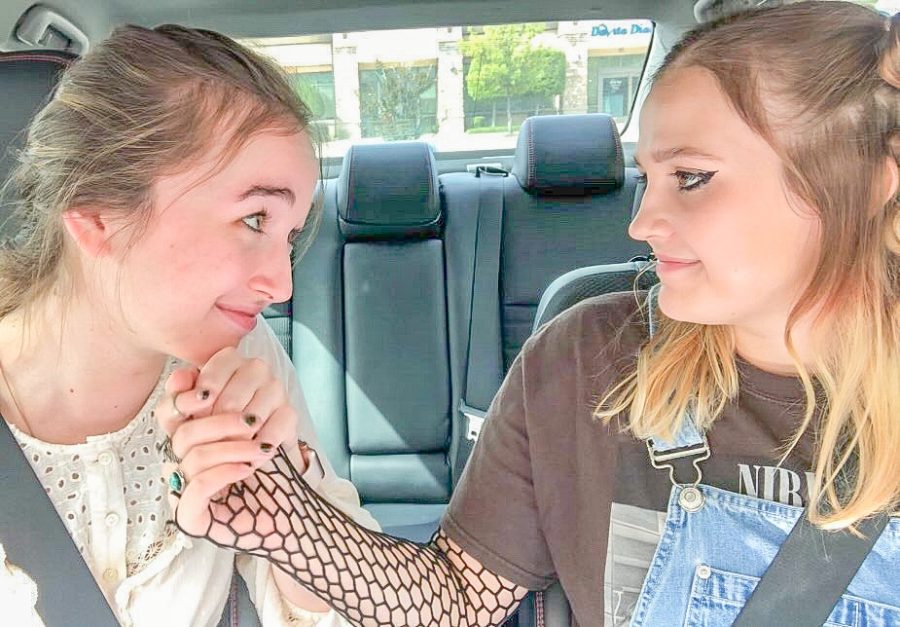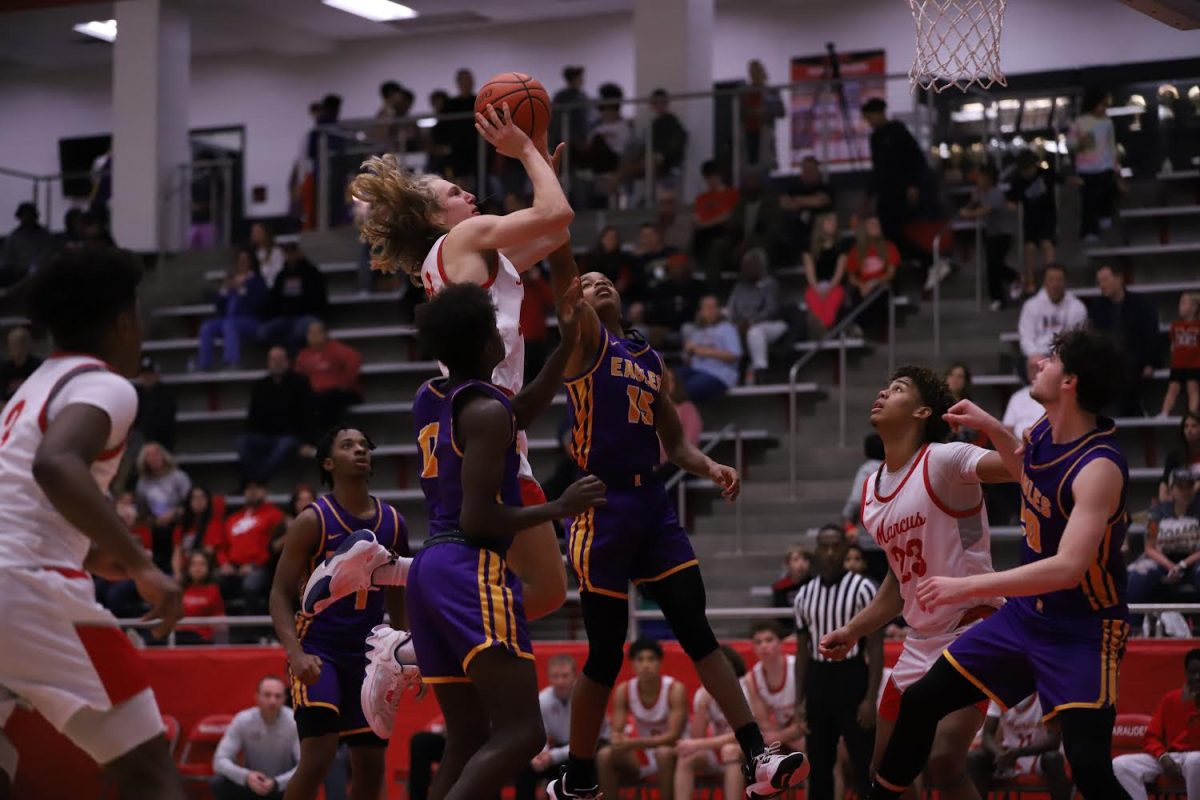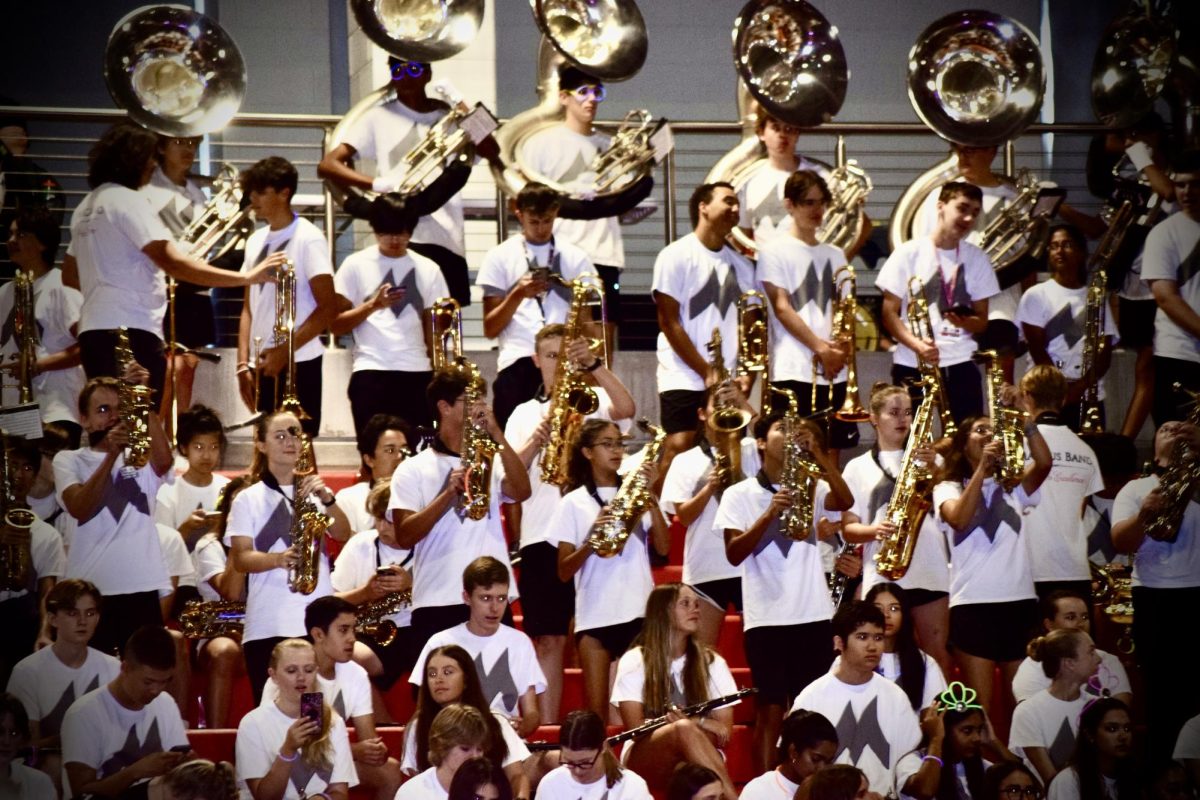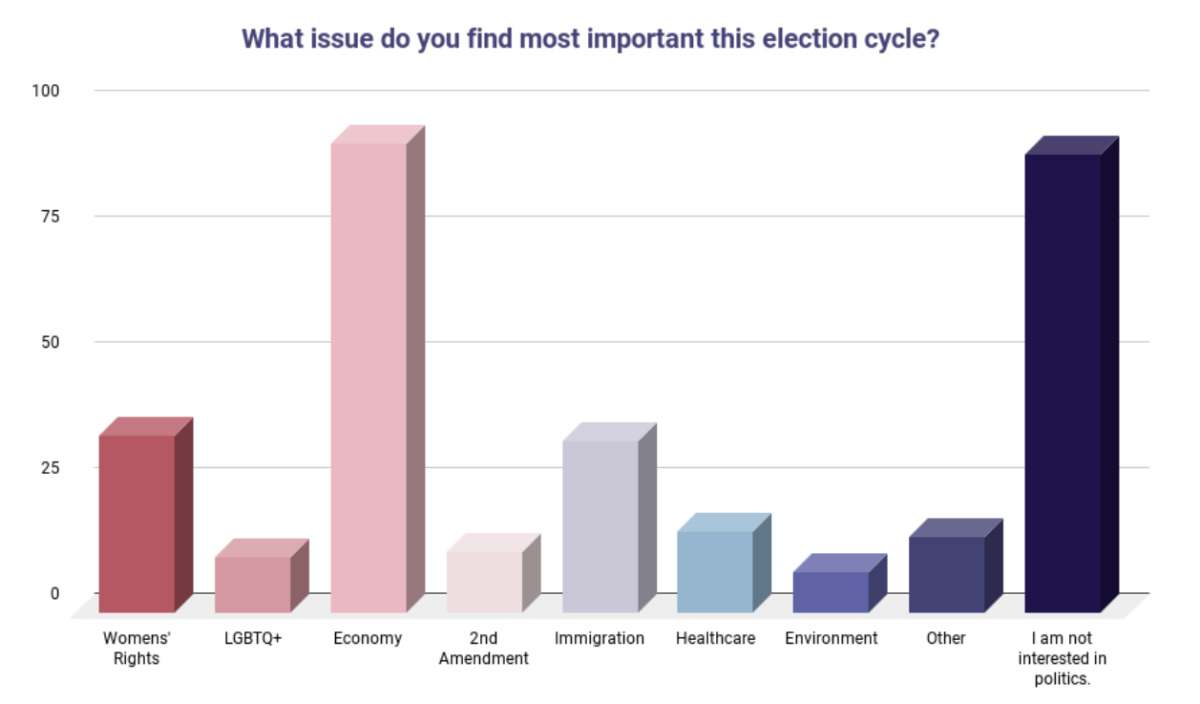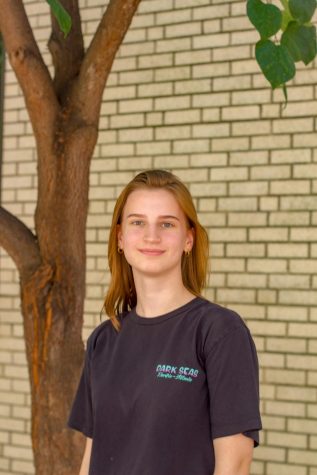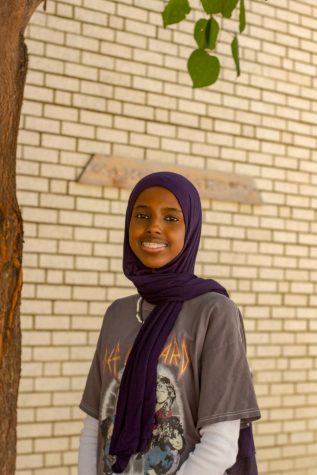Editor’s note: This story won honorable mention for online entertainment feature in the 2022 TAJE Best in Texas contest.
The camera rolls as Devin orders lunch for her and her girlfriend Olive. It’s the usual – a Number 2 with a medium lemonade and a Number 4 with diet Dr. Pepper. As the couple waits on their food, Devin gets the unshakable feeling that something is off.
“Stop calling me kid,” a man yells from the counter at the front of the food court.
Suddenly, a loud BANG echoes through the food court. Olive wraps her arm tightly around Devon’s shoulders to bring her to safety.
They feel hopeless as the man’s heavy work boots draw nearer. The pair hides behind a booth as the threat looms over them.
As they look up, they can see his face and all black outfit.
His gloved hand reaches out, displaying a gun. As the man pulls the trigger, the small moments of their lives – parties with friends, late night drives, birds on the beach – are gone.
• • •
This is the plot of junior Myra Chauvin’s five minute short film, “SHOTS,” which follows partners Devin and Olive on the day of an armed robbery.
The process for creating the film began when Myra heard about the Texas Thespian Festival, which hosts different theatre competitions throughout the year.
Myra brainstormed ideas until she decided on a gas station robbery plot. Myra began exploring the plot lines she could include in this concept.
“As I was doing that, I started to like it even more,” Myra said.
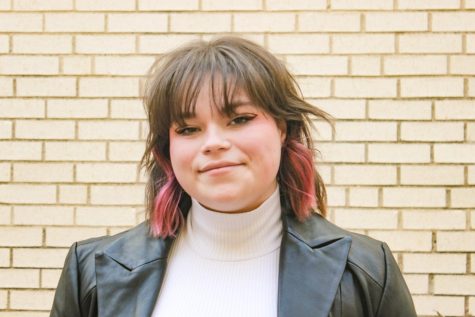
While writing dialogue for her script, Myra gathered inspiration from real world interactions she witnessed in different public spaces. She rewatched her favorite movies for guidance on shot types and storytelling.
She watched coming of age movies like “Unpregnant” and “Fear Street” for storytelling inspiration.
She wrote her script in a week and a half and focused the rest of her time on developing her characters. She struggled figuring out who she wanted her characters to be, but thought about what kind of characters she wanted to see in media.
“I wanted to have my type of representation on screen,” Myra said. “So it’s just two gay characters.”
Myra, who identifies as queer and uses she/they pronouns, hopes that in the future LGBTQ+ representation can become more normalized.
“Whenever you do see the representation, you’re like, ‘Hey that’s me on stage, that’s me on screen,” Myra said. “Finding those certain parts of you in media, I think that’s so important.”
Myra’s identity influenced the writing of her main characters, Olive and Devin. After developing her characters, she focused on her story. Myra wanted to create likable characters whose tragic story would evoke emotion in the audience.
“I want to just show a perfect life and … then snatch it,” Myra said. “That’s how families feel whenever something unexpected like a shooting happens.”
Myra then began casting, choosing people she knew from theatre workshops and mutual friends. She knew who the perfect person was for every role.
But Myra struggled to find the right person to play Devin. Originally she did not want to use any actors from the school, because she intended for the short film to be an independent project.
“I really wanted this to be something like outside where I can put my whole entire name on and be like, ‘I didn’t use any help’,” Myra said.
But Myra was hesitant to cast someone without film acting experience for the role . The struggle of casting Devin actually slowed the writing process, and Myra felt that she needed to rework the script.
Myra approached junior Jordan Thompson and offered her the role, and Thompson was ready to take on the challenge of portraying the complex character.
“There’s a whole process you have to go through with building a character in the first place,” Thompson said.
Once she had figured out who Devin was, Thompson was able to comfortably play her, and was ready to tell her story.
“You close your eyes, and you concentrate on that character and on like their beliefs and who they are,” Thompson said. “And then you just let yourself live that way.”
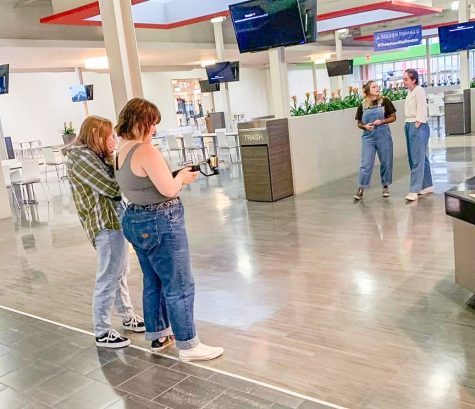
Once she had cast the show, Myra had to figure out where they would be filming. Originally the film is set in a gas station, but the gas stations she had reached out to had either not responded to her or said she couldn’t film there.
Myra’s mom works at a nearby mall, and got approval for her to film there.
Filming began, and Myra set out to frame her shots.
“I tried to do as many angles as I could,” Myra said. “So, whenever I got to the editing process, I could have so many to choose between.”
Myra said that the group worked well together while filming. She often laughed with them between takes about silly mistakes. She shot her scenes in two day, and then it was on to editing.
Even though she knew most of the parts of filming, Myra still found herself learning along the way. While editing for the first time, she ran into frustrations when her work didn’t save.
“There was one time I accidentally deleted everything that I did and I had been working on it for like an hour and a half,” Myra said.
Though the road was bumpy, she said that the challenges she faced turned out to be for the best. Her main takeaway was learning to value even the moments when things get difficult, because she learned something from each challenge.
“Something’s always going to come back and you’re going to learn a big lesson from it,” Myra said.
As she presented her film, Myra felt an overwhelming sense of pride for the work that she had done.
As the credits rolled, the room was dead silent.
“I was like, ‘This is what I want.’ Everyone doesn’t know whether to clap or cry,” Myra said.
As she received praise from the judges for her storytelling and editing, Myra knew that she had accomplished what she had set out to do.
She had created a work that she was proud of, that she could put her name on, and that portrayed her message of the importance of small moments in life.
“I felt so proud of myself,“ Myra said.





